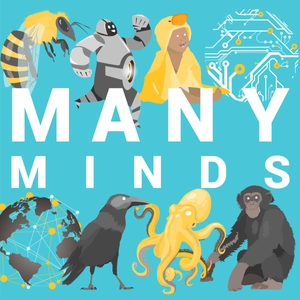
Many Minds
Kensy Cooperrider – Diverse Intelligences Summer Institute

1 Listener
All episodes
Best episodes
Seasons
Top 10 Many Minds Episodes
Goodpods has curated a list of the 10 best Many Minds episodes, ranked by the number of listens and likes each episode have garnered from our listeners. If you are listening to Many Minds for the first time, there's no better place to start than with one of these standout episodes. If you are a fan of the show, vote for your favorite Many Minds episode by adding your comments to the episode page.
Featured in these lists
FAQ
How many episodes does Many Minds have?
Many Minds currently has 127 episodes available.
What topics does Many Minds cover?
The podcast is about Animals, Psychology, Podcasts, Education, Brain, Science, Philosophy, Thinking and Biology.
What is the most popular episode on Many Minds?
The episode title 'The five portals of cognitive evolution' is the most popular.
What is the average episode length on Many Minds?
The average episode length on Many Minds is 61 minutes.
How often are episodes of Many Minds released?
Episodes of Many Minds are typically released every 14 days.
When was the first episode of Many Minds?
The first episode of Many Minds was released on Feb 15, 2020.
Show more FAQ

Show more FAQ
